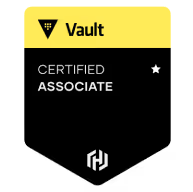
Optimise Your Cloud Cost Without Sacrificing Performance Of Security
Cloud costs can quickly spiral out of control with unused/underutilised resources, unpredictable pricing updates, and unnecessary investments in storage or software licences. But this doesn’t have to be the case.
Ready for lift-off? Find out how much you could be saving each month.

CLOUD COST OPTIMISATION BENEFITS
Want More Cloud, Less Costs?
Cloud Cost Optimisation is the process of reducing your cloud spending by identifying and optimising ill-managed resources, reserving capacity for higher discounts, eliminating unnecessary resources, and right-sizing computing services for your Cloud environment.
Prioritising your cloud spending is one of the most critical responsibilities of FinOps.
Cloud cost optimisation helps businesses identify and eliminate unnecessary expenses, reducing their overall cloud spending. This can free up resources that can be allocated to more critical areas of the business, such as research and development or customer experience initiatives.
By optimising cloud usage, businesses can reduce wasteful resource allocation and improve operational efficiency. This can lead to faster application performance, quicker time-to-market, and better overall business agility.
Cloud cost optimisation will enable you to scale your cloud usage up or down as needed, without incurring unnecessary expenses. This ensures that your business can adapt to its evolving operational needs while staying within budget.
Cloud cost optimisation helps you identify the most efficient resource allocation strategies for your cloud environments, ensuring that they are leveraging the right mix of cloud services to meet your needs.
Cloud cost optimisation can help you improve your cloud security posture by ensuring that you are not overspending on unnecessary security services or underutilising critical security features.
Cloud cost optimisation provides you with greater visibility and control over your cloud environments. This can help you identify areas of inefficiency and take action to improve them.
Cloud cost optimisation can help you implement better governance practices for your cloud environments, ensuring compliance with industry regulations and internal policies.
By optimising cloud costs, you can more accurately forecast your cloud spending and plan your budgets accordingly.
Cloud cost optimisation can help you align your cloud strategy with your broader business goals, ensuring that you are leveraging the right cloud services to achieve your long-term objectives.
WHY DO CLOUD COSTS SPIRAL OUT OF CONTROL?
The Need for Continuous Cloud Cost Optimisations
Wouldn’t it be great if you could set up a cloud environment and expect your costs to run smoothly? Unfortunately, the cloud doesn’t work that way. The fact is, nothing about the cloud is static, which is why continuous cloud cost optimisations are critical.
As a business grows and expands its operations, its cloud usage inevitably increases, and without proper cost optimisation measures in place, the associated costs can quickly spiral out of control.
Your business needs can change rapidly, and so can the cloud resources required to meet those needs. Without proper cloud cost optimisation measures in place, these changing requirements can drive up cloud costs and put a strain on your financial resources
As a business's technology stack evolves, businesses may be overspending on legacy systems that no longer serve them or that have not been integrated and optimised to support new business requirements.
Cloud technology is constantly evolving and improving, with new services and features being released regularly. While this presents businesses with exciting opportunities for growth and innovation, it also creates the risk of overspending on outdated or inefficient cloud services if not optimised correctly.
CLOUD COST OPTIMISATION STRATEGY
Our Approach To Get You Through These Challenges

Cost control is not a checklist, but an iterative process consisting of 3 major phases:
Assess and Optimise to reduce the cost base by engineering measures.
Assess and Optimise to reduce the cost base by engineering measures.
Commit on cloud spend to unlock additional discount and incentives
Our Cost Optimisations are aimed at not only assessing and optimising your spend, but also to advise you on how to unlock further value through Reserved Resources and Committed Usage Discounts.
We use a number of strategies to optimise your cloud spend without sacrifice.
The diagram below outlines some of the cost-saving strategies that are assessed during the Cloud Cost Optimisation Assessment.


Identifying and eliminating idle instances or services that are not being actively used can significantly reduce cloud costs. Regularly analysing resource utilisation data and automating shutdown or the scaling down of idle instances can ensure that you're only paying for resources that are actively in use.

Autoscaling automatically adjusts the number of cloud resources based on demand, ensuring that you have enough capacity to handle spikes in usage without over provisioning and incurring unnecessary costs. This is particularly useful for applications with variable workloads, such as eCommerce websites or social media platforms.

Rightsizing involves selecting the appropriate instance type and size for each workload to match its actual resource requirements. Overprovisioning larger instances than necessary leads to wasted resources and higher costs. By analysing workload characteristics and selecting the most efficient instance type, you can optimise resource utilisation and reduce cloud expenses.

Cloud providers offer custom machine types that allow you to tailor the CPU, memory, and storage resources to specific workloads. This flexibility can be particularly beneficial for specialised applications that have unique performance or resource requirements. By carefully selecting custom machine types, you can optimise resource utilisation and avoid overprovisioning.

Bin-packing involves efficiently packing multiple workloads onto a single instance to maximise resource utilisation and reduce costs. By analysing workload resource requirements and using appropriate scheduling algorithms, you can group workloads together and allocate resources effectively, leading to significant cost savings.

Most cloud providers offer committed use discounts for long-term commitments to reserved instances or reserved capacity. These discounts provide significant savings on cloud usage if you have predictable workloads that require consistent resource allocation. By committing to reserved resources for a specific period, you can lock in lower prices and reduce your overall cloud costs.

Storage optimisation involves identifying and eliminating unused or unnecessary data from storage services. This can involve decommissioning old or inactive data, compressing files, and using object storage for infrequently accessed data. By optimising storage usage, you can free up storage space and reduce associated costs.

Rearchitecting involves redesigning applications and infrastructure to reduce cloud resource usage and optimise performance. This may involve moving to serverless architectures, leveraging cloud-native services, or adopting containerization technologies. By rearchitecting for cloud efficiency, you can achieve significant cost savings and improve overall application performance.

WHY WE’RE THE BEST FIT FOR YOUR BUSINESS
Businesses Already Trust Us As Their Technology Partner
Our team is relentlessly exploring innovative approaches to maximise cloud value while ensuring cost-effectiveness. They are consistently seeking opportunities to automate insights and recommendation extractions.
We have successfully delivered substantial cost savings for our clients, with some achieving an astonishing 80% reduction in cloud expenditure.
We partner across all major public cloud providers, putting us in a unique position to broker the best deal for your business.





Cloud Client Testimonials
Hear What Our Clients Have To Say
cloud faq's
Got Questions? We Have Answers.
Businesses can manage cloud costs using tools like cost management platforms, billing dashboards, and usage reports. They can also set budgets, allocate resources efficiently, and implement cost optimisation strategies.
Businesses can balance cost optimisation with the need for performance and reliability by conducting regular performance testing and monitoring. They can also prioritise mission-critical services and ensure that any cloud cost optimisation strategies are not compromising on the quality of service. Additionally, businesses can consider using hybrid cloud environments to take advantage of cost savings while maintaining control over critical applications.
Businesses can monitor and manage their cloud costs through various tools and services, including cloud cost management tools, billing dashboards, and usage reports. They can also set budgets, allocate resources effectively, and implement cost optimisation strategies.
Some common techniques used for cloud cost optimisation include rightsizing resources, shutting down unused resources, utilising spot instances, implementing automation, and using reserved instances.
Cloud cost optimisation is important because it can help businesses save money and allocate their resources more efficiently. It also ensures that the cloud environment is being used to its fullest potential and not wasting any resources.
Cloud cost optimisation refers to the practice of reducing cloud-related expenses without compromising on the quality of services offered. This can involve minimising the use of unnecessary resources, automating processes, and utilising cost-effective services.
Cloud Resources
Expand Your Knowledge Of The Cloudverse
get in touch
Let's talk Cloud Solutions
If you're ready to take your business to the next level and focus on what matters most - achieving your objectives, then it's time to leverage the power of our Managed Platforms.
Schedule a free consultation with us today and let us show you how we can take care of your needs, so you can concentrate on growing your business!











.avif)











